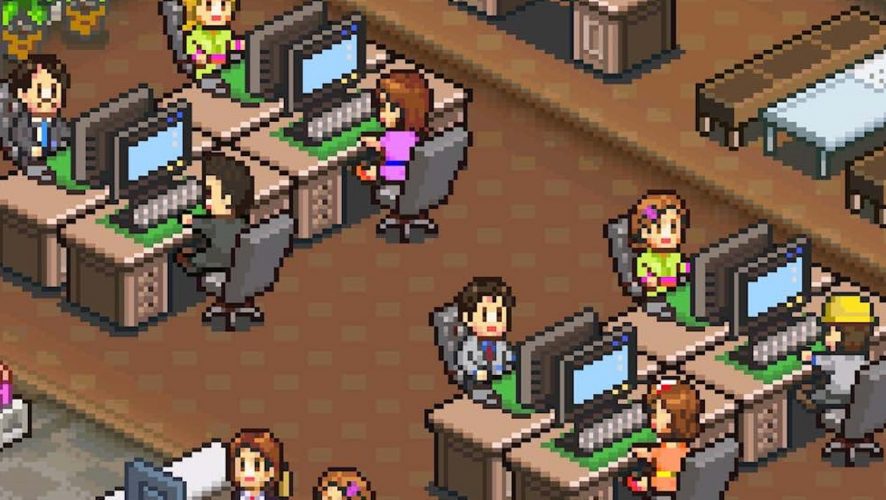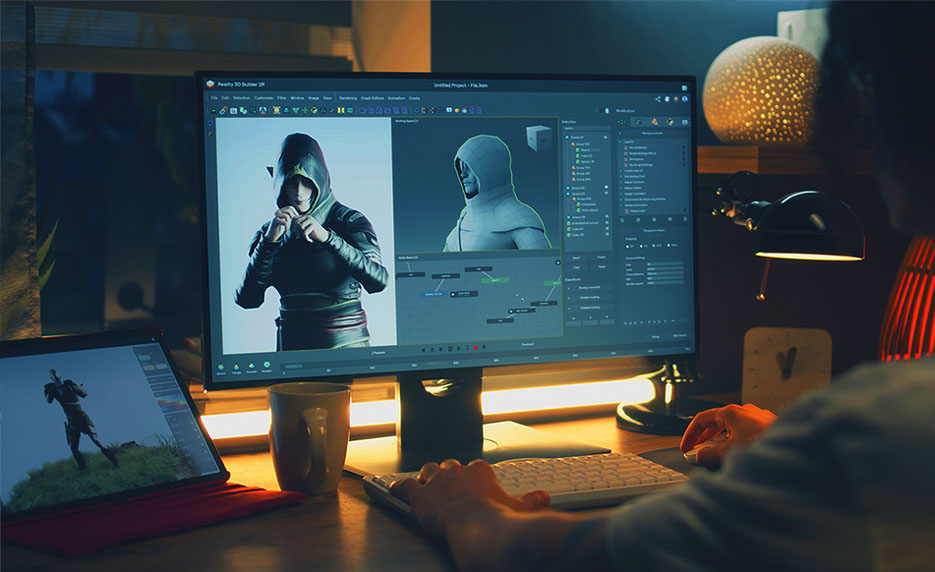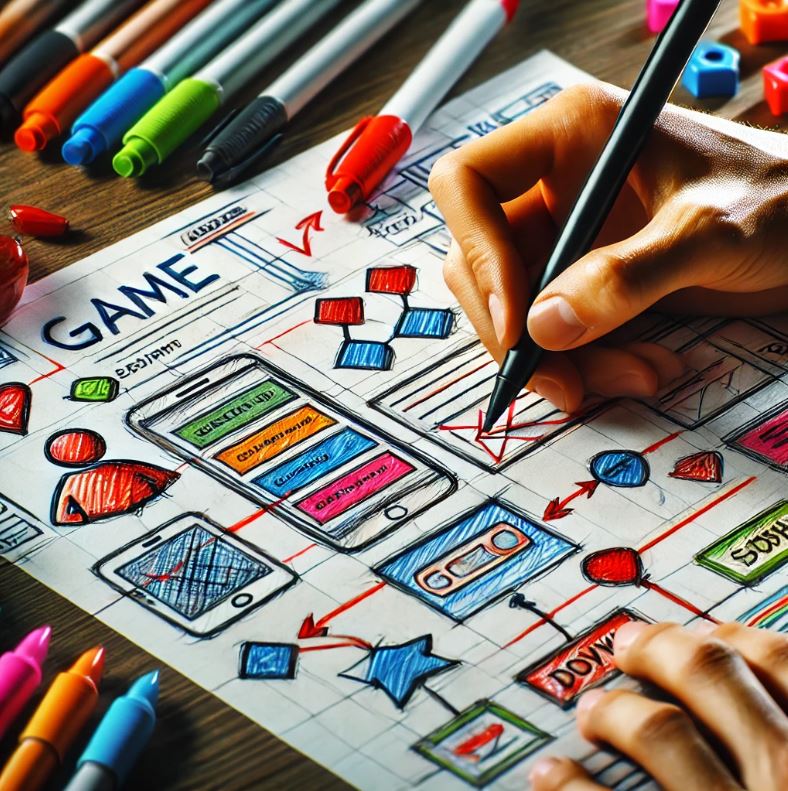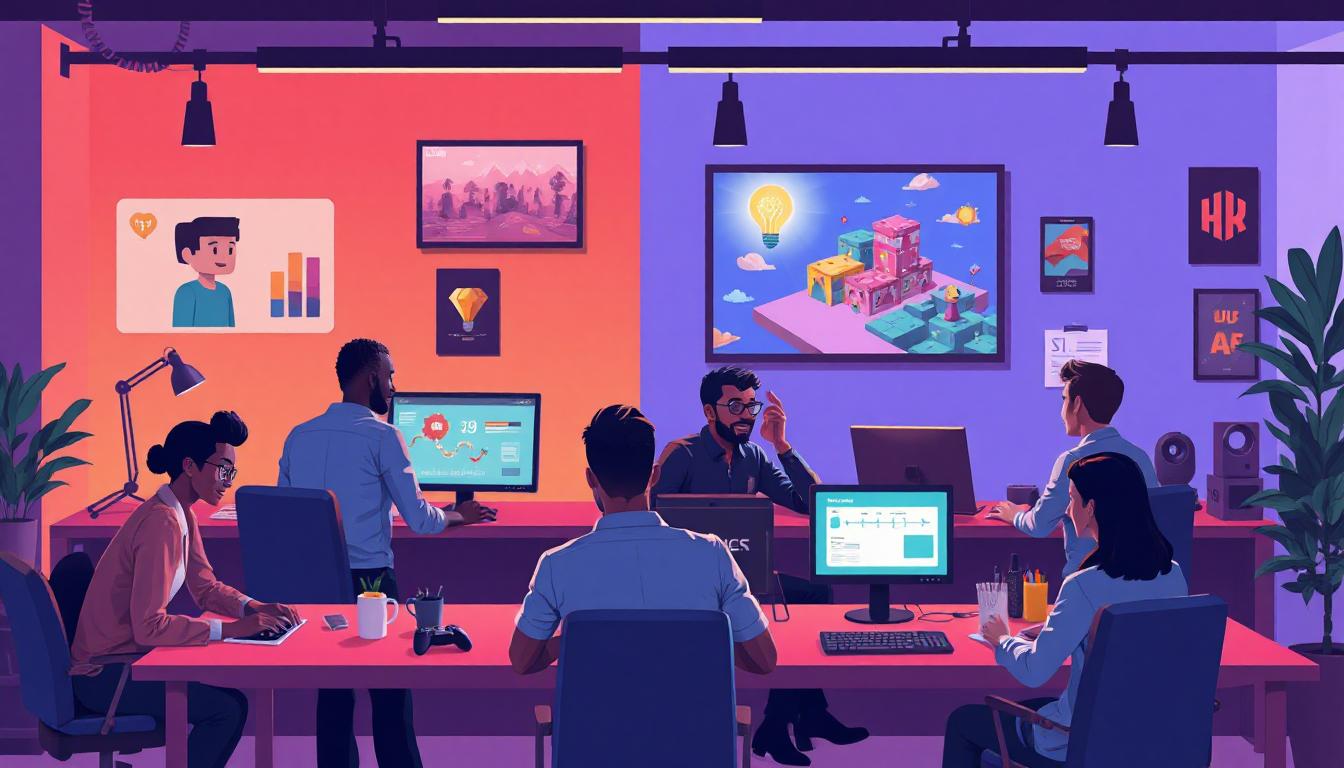
Building the Dream Game Development Team: Essential Roles in an Indie Game Studio
The necessity of a game development team is tangible through the quote from Michael Jordan that states, “Talents win games, but teamwork and intelligence win championships!”! No one can ignore the importance of game development team roles due to the diversity, creativity, and quality that each one brings to the table! Through this article, you will figure out how a game developer benefits from an appropriate game development team structure! However, it is necessary to mention the importance of a game development team, essential game development roles and responsibilities, and answer the question of how we should shape a strong team structure. Let’s dive into the topic!
Importance of Game Development Team Roles in a Game Studio
A great indie game project always relies on a great game development team due to the diversity, creativity, and adaptability that all crucial roles bring to the table. Here are some crucial reasons that enhance an innovative game development journey by a team:
Diverse Skill Sets
The game development team roles, like designers, programmers, etc., bring together individual points of view, allowing for a well-rounded approach to game development. The diversity that comes from different individuals fosters creativity and innovation, leading to unique game development experiences.
Collaboration and Creativity
A good team environment opens all the doors to collaboration, sharing ideas, and brainstorming, which are all necessary for developing an indie game. The result might be fantastic. It leads to more innovative concepts and solutions than an individual game developer could achieve alone.
Resource Management
Indie game development teams always encounter limited budgets. The roles of the team could be crucial in this regard: maximizing output without overextending any one person. Every individual can focus on their strengths while supporting others.
Enhanced Problem Solving
Collaboration effectively solves problems. In other words, different perspectives offer various solutions and make the problem-solving process easier in each field, including design, programming, etc.
Support and Motivation
Game development can be a long, overwhelming process. A supportive game development team supports all individuals to maintain motivation, morale, and accountability. Members can positively push each other to go further in the rough direction to get success.
Community Engagement
Having a dedicated game development team enhances better communication and feedback collection, ensuring that the game aligns with player expectations and desires. This is fulfilled specifically in indie teams due to their direct engagement with their player base.
Quality Control
A game development team can identify details that one game developer is unable to figure out alone. As a result, the team can establish more exact quality assurance measures. Different team roles can cover a broader range of testing, ensuring that bugs and issues are identified and addressed before release.
Distribution of Marketing Efforts
Without game marketing efforts, even the best games are endangered. If you are interested in game marketing, please check the article “Game Marketing Strategy: The Marketing Transformation in the Game Industry.” However, in the case of the game development team, a great team can make marketing roles possible and ensure community management through the responsibilities of distribution.
Adaptability
A game development team is more flexible when encountering challenges, changes, and iterations. Thus, a team can be more adaptive than an individual game developer when pivoting and adapting more readily to new ideas and feedback during indie game development.
Shared Vision and Goals
Being part of a team encourages members to align with a shared vision for the game, fostering a strong sense of purpose. This collective goal helps drive the project forward through various stages of development.
An indie game development team is vital for pooling talents, enhancing creativity, and fostering collaboration. The synergy created when individuals come together can lead to innovative ideas and polished projects, significantly increasing the chances of a successful game launch.
Game Development Roles and Responsibilities
No one can shape an essential game development team without an appropriate understanding of its roles and responsibilities. Here is a list of crucial team roles!
Game Designer
Game designers should conceptualize game mechanics, systems, and overall gameplay experience. They create design documents outlining levels, characters, and interactions. So they need to be creative, aware of the game mechanics, well-experienced with design software,
Programmer
Programmers write the code that brings the game to life, including gameplay mechanics, user interfaces, and back-end systems. They also work on debugging and optimizing code. They need to be proficient in different programming languages like C++, C#, or Python, problem-solving, and knowledge of game engines such as Unity or Unreal Engine.
Artist/Animator
The artist creates the visual elements of the game, including character models, environments, and animations. They ensure that the art style matches the game’s vision.
Sound Designer
The sound designer develops the audio aspects of the game, including background music, sound effects, and voiceovers. They create an immersive audio experience that enhances gameplay.
Producer/Project Manager
Producers oversee the project, managing timelines, budgets, and team coordination. They ensure that the team meets deadlines and that resources are allocated effectively.
Quality Assurance Tester
A tester tests the game for bugs, glitches, and gameplay issues, providing feedback to developers. They ensure the game is polished and functions correctly before release. So, they need to be problem-solvers, know tenting methodologies, and be careful about the details.
Narrative Designer/Writer
A narrative designer develops the game’s story, dialogue, and character development. They need to know writing skills, storytelling abilities, and game mechanics to create engaging narratives and ensure the story aligns with gameplay.
UI/UX Designer
UI/UX designer focuses on user interface design and user experience, ensuring that the game is intuitive and visually appealing. They create menus, HUDs, and overall usability.
Community Manager
The community Manager engages with players and manages the game’s community. They gather feedback, build relationships, and promote the game through social media and forums.
Each role brings a unique set of skills and perspectives that contribute to the game’s overall success. Depending on the studio’s size and the project’s scope, individuals may take on multiple roles, especially in smaller indie teams.
Characteristic of the Best Indie Game Development Team
The best indie game development teams often share several key characteristics that contribute to their success. Here’s a breakdown of these traits:
- Passion and commitment
- Versatility and skill diversity
- Strong communication
- Collaboration and teamwork
- Agility and flexibility
- Resourcefulness
- Strong community engagement
- Focus on quality over quantity
- Resilience and persistence
The best indie game development teams thrive on a mix of passion, diverse skills, effective communication, and community engagement. Their ability to adapt and maintain resilience in the face of challenges often distinguishes successful projects from those that struggle.

Shaping a Game Development Team Structure
Shaping a good indie game development team involves careful consideration of team composition, culture, and processes. Here are some strategies to help you build an effective indie game development team:
- Define the Vision and Goals
Establish a shared vision for the game project. Make sure that everyone understands the goals and what you aim to achieve.
- Diverse Skill Sets
Ensure you have a mix of skills in your team, including game design, programming, art, sound, and marketing. Consider roles like:
- Flexible Team Structure
Tart with a core group and expand as necessary. This allows for easier management and resource allocation, especially in early development.
- Foster a Collaborative Culture
Promote transparent and open communication among team members. Use collaboration tools such as Slack, Discord, or project management software.
- Encourage Creativity and Innovation
Hold regular brainstorms to generate new ideas. Create an atmosphere where all suggestions are welcome and valued.
- Set Clear Responsibilities
Clearly define the responsibilities of each team member to avoid overlaps and confusion. Share tasks based on individual strengths and expertise.
- Promote Work-Life Balance
Avoid setting unrealistic deadlines that lead to burnout. Respect personal time to maintain team morale.
- Engage with the Community
Involve players early through beta testing or community engagement to gather insights and improve the game.
- Continuous Learning and Growth
Encourage team members to learn new tools and techniques relevant to their roles. Online courses, workshops, or conferences can facilitate this.
- Celebrate Achievements
Acknowledge individual and team accomplishments, large or small. Celebrate milestones regularly to boost morale and promote a positive team environment.
Building a good indie game development team means focusing on diversity, collaboration, and adaptation. Ensuring that every team member aligns with the project’s vision while fostering an innovative and supportive culture can significantly contribute to the success of your game development efforts.
Q&A
What is a Gaming Studio?
A gaming studio is a company that develops video games. Its employees include designers, programmers, artists, and writers. These studios create games for platforms such as consoles, PCs, and mobile devices, focusing on storytelling, graphics, and user experience to engage players in interactive entertainment.
Is there any recommended indie game development team size to develop an indie game?
An ideal indie game development team often consists of 5 to 15 members, balancing skills in programming, art, design, and sound. This size encourages collaboration and efficiency while allowing diverse contributions. Key roles include a project manager, designer, programmer, artist, and sound engineer to cover essential development aspects.


